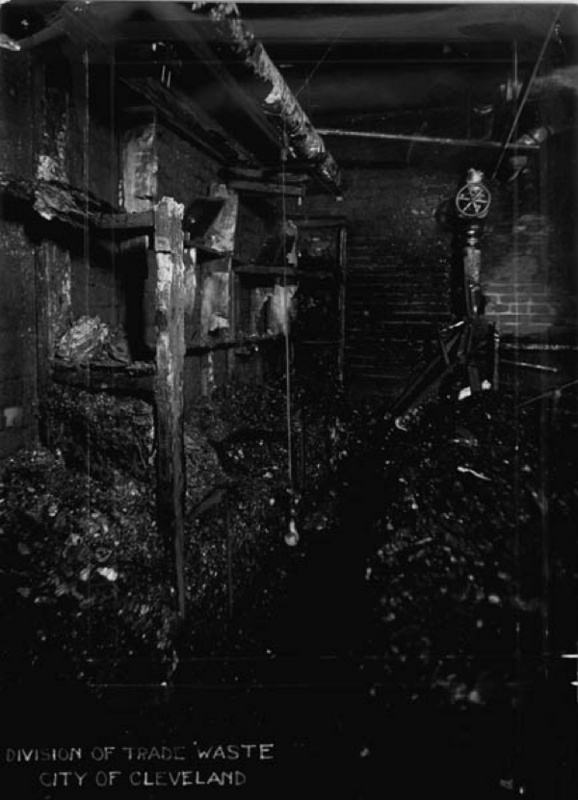The Cleveland Clinic X-Ray Fire of 1929

Wednesday, May 15, 1929 was just another busy day at the Cleveland Clinic. A steamfitter had arrived early that morning to repair a leaky steam pipe in the sub-basement, which had been converted into a storage room for the hospital's x-ray film. This routine repair morphed into a national tragedy as the exposed steam came into contact with approximately 3-4 tons of volatile nitrate x-ray film.
Nitrocellulose film was developed by the Eastman Kodak Company during the late 1880s for use in both the field of medicine, as well as the motion picture industry. The Eastman Kodak Company's nitrate film developed a penchant for being highly volatile, unstable and extraordinarily flammable. If nitrate film ignites, it becomes extremely difficult to extinguish. Immersing burning film in water may not extinguish it, and could actually increase the amount of deadly gas emitted.
The steam acted as the primary catalyst, which caused the highly unstable nitrate film to decompose and emit a poisonous cloud of gas. The gas soon ignited creating two violent explosions, which rocked the clinic, practically blowing the roof off of the building. The explosions forced deadly fumes at a high rate of pressure into the pipe tunnel system and up the pipe ducts into nearly every room of every floor of the hospital almost immediately. The yellowish-brown smoke also found its way up the major stairways between each floor, thus trapping most of the 225 occupants of the hospital in an inescapable, terrifying cloud of imminent death. The toxic vapors caught most of the victims by surprise, as several doctors and nurses collapsed at their desks, while others only managed a step or two in their escape before kneeling over and dying. One hundred and twenty three victims almost instantaneously perished that day.
A few of the victims were miraculously able to escape the hospital, rescued by firemen, policemen or volunteers. Unfortunately, anyone who had inadvertently inhaled any quantity of the fumes succumbed to and died from the toxic vapor, some soon after and others not for several days. It had been reported by dozens of witnesses that the bodies of the first victims turned yellow and later green after being brought out of the building. This ghastly, macabre scene left an indelible legacy that forced officials to reexamine safety procedures.
The historic disaster that occurred at the Cleveland Clinic was unprecedented in its time and it captured the attention of people on a national, and even worldwide scale. Several of the investigating commissions that were charged with finding the cause of the fumes and fire made amendments to policy that would profoundly alter fire-fighting practices, hospital procedures and the methodology behind the proper use and storage of hazardous chemicals and materials in the United States and throughout the world.
Images









